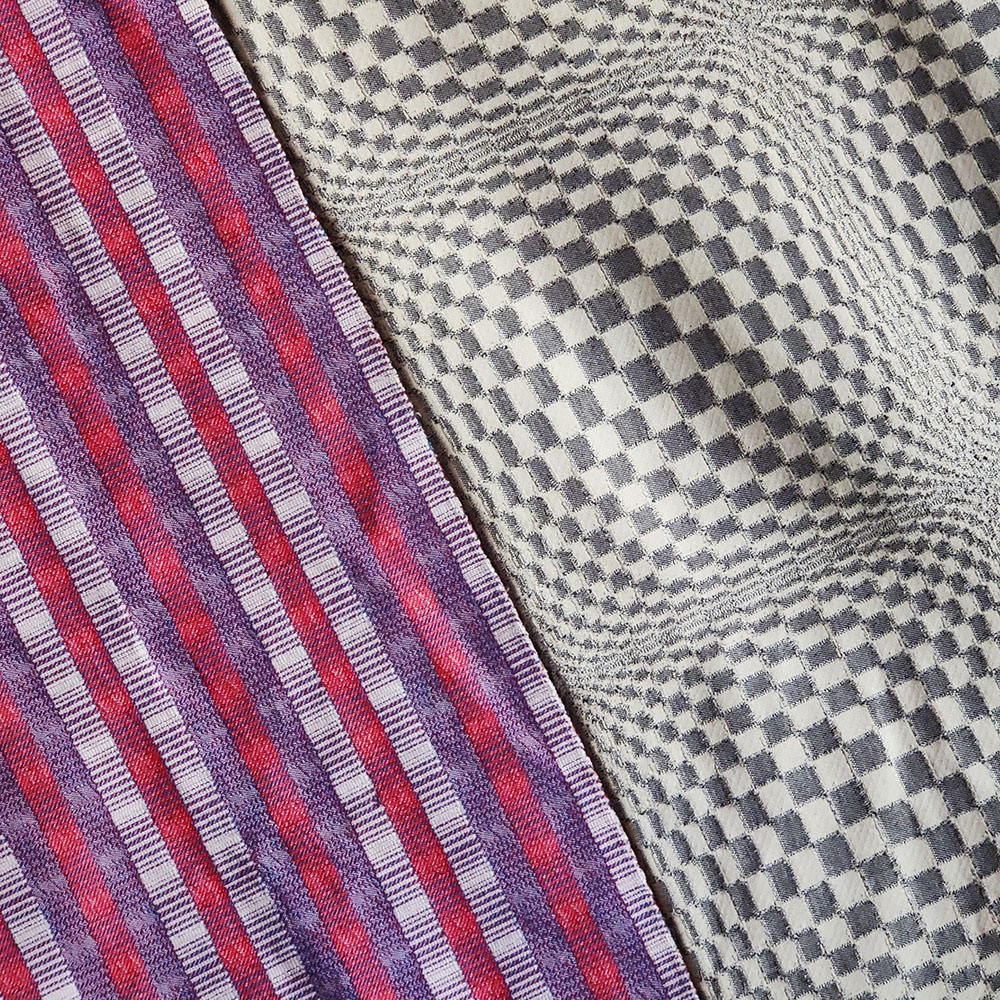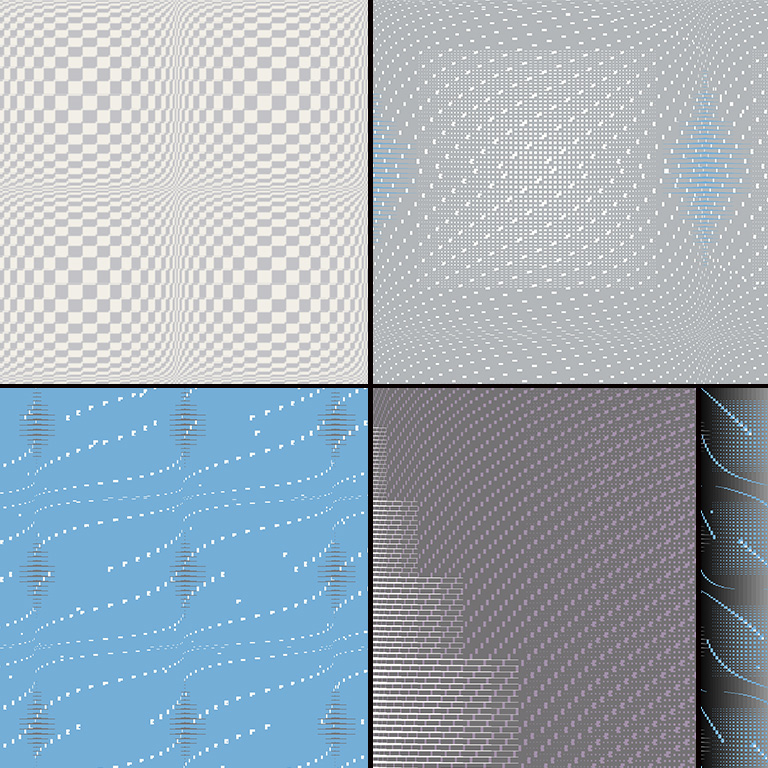LISA TOLENTINO
DIGITABEL
GENERATIVE TEXTILES IN ILOCANO FORMS
About
In 2015, I was teaching a course in generative design and coding to a group of high school kids. Some of them struggled with math, while others did not believe that visual art was their strength. I told them that what made coding and mathematics beautiful and "real" for me was that I could use this language to describe the visual patterns I see in nature, in the world.
While visiting my childhood home in California, I was looking through my mom's closet and found a beautiful handwoven purple robe. Mom told me that my aunt, who worked in the farms in Delano, had woven it. My parents wanted to buy her a loom so she could continue the weaving she did in the Philippines and create a business, but being modest, she declined.
I wanted to pick up where she left off. Since then, I have been studying the patterns and forms of binakol and inabel / abel - Ilocano woven cloth design, and trying to recreate these patterns through algorithms in code. Then I expand these designs in ways that follow my curiosity. These are some of my designs.

Two textiles, two years in the making.
Ilocano weavers from the Philippine province of Ilocos Norte, design a kind of abel (or "cloth" in Ilocano) known as binakol. The binakol pattern is manually woven using a pedal loom. The pattern is made up of alternating squares and rectangles that modulate in thickness and frequency, creating an illusion of movement that is meant to protect against evil spirits.

Intermediate designs produced from code.
To find the algorithm for these textiles, I studied images of binakol fabric and experimented with trigonometric functions. My first experiment was in one-dimension, resulting in the striped pattern in white, violet and red (see left image, far left). A year later, I expanded it to two dimensions to produce the grey-and-white checkered binakol-style design.